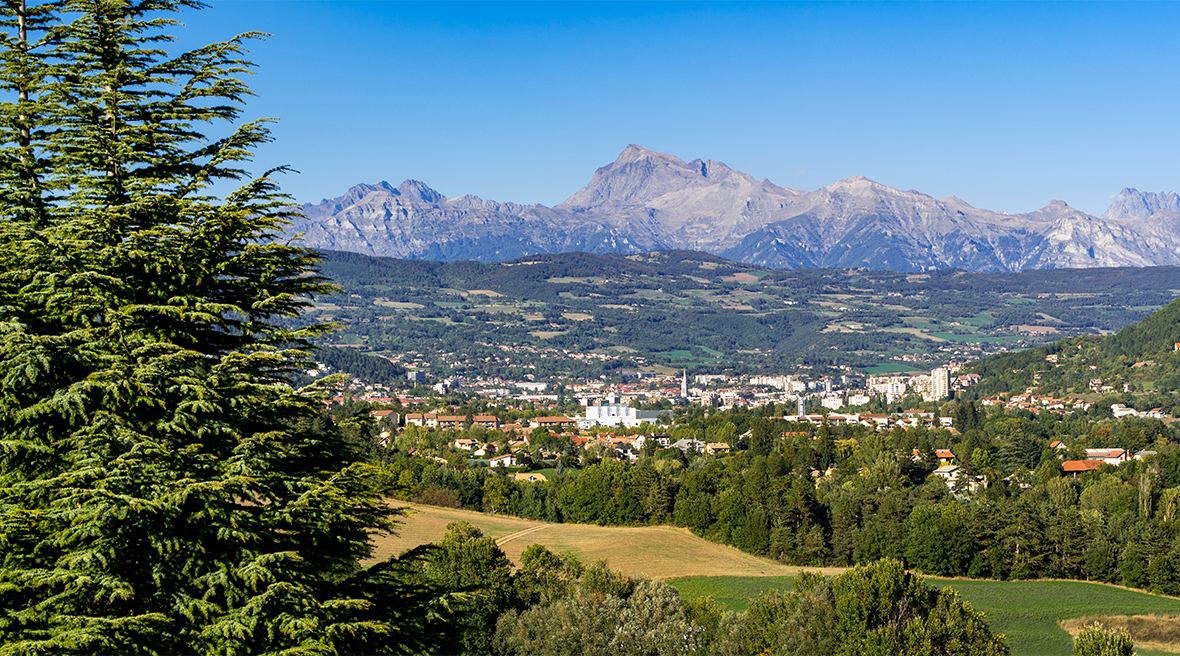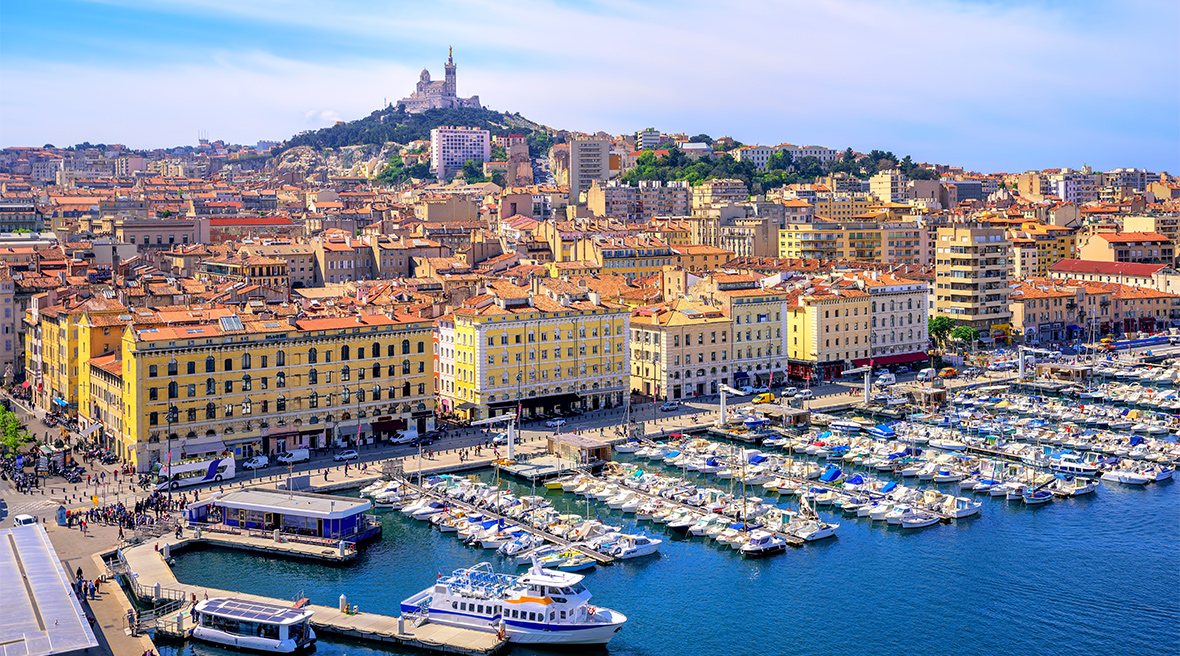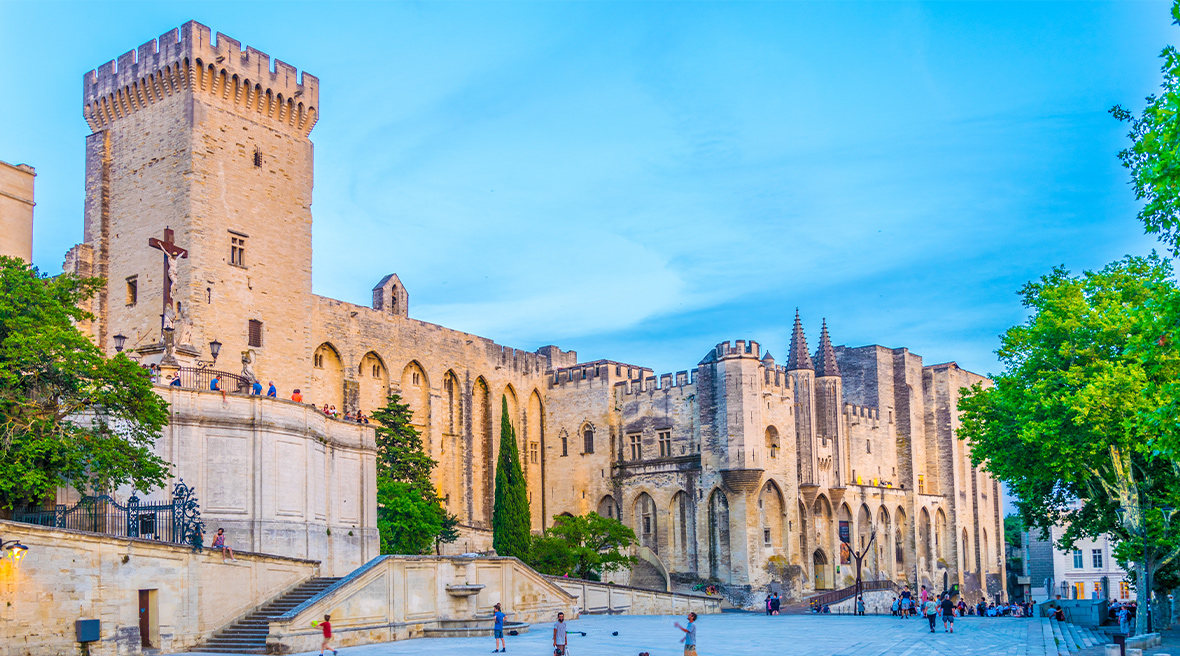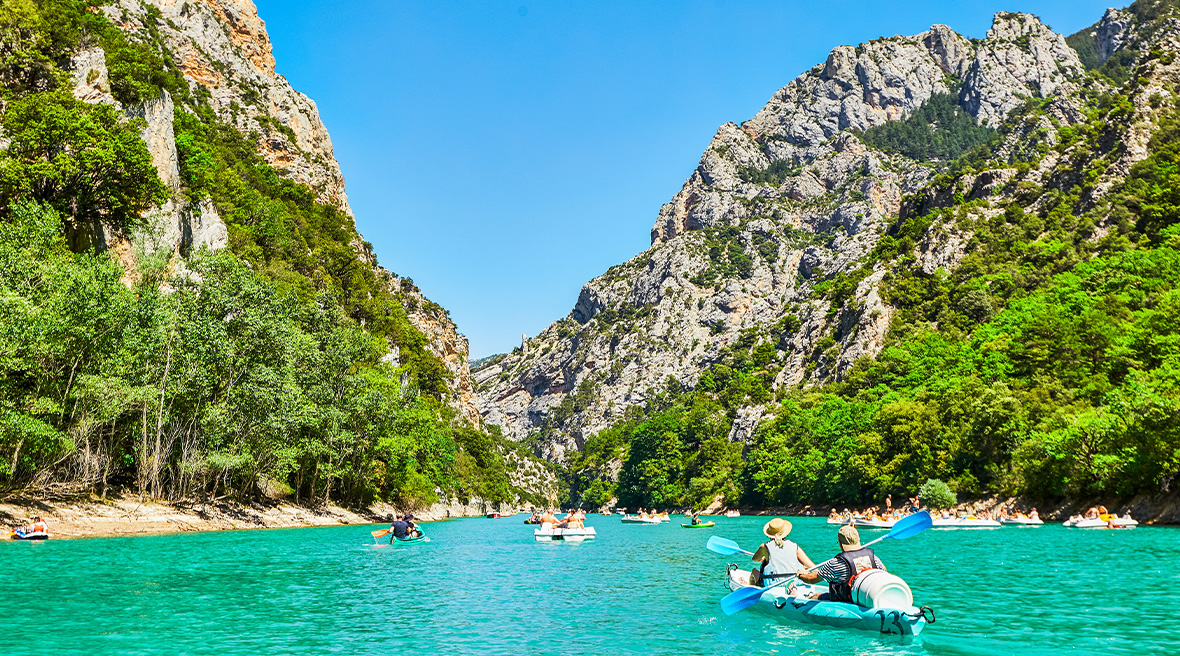The Eurotunnel guide to Provence-Alpes-Côte d'Azur
Where else can you explore snow-capped mountains one day, drive through olive groves another, and relax on the beach the day after that? The answer: Provence.
Known as the Mediterranean heartland of France, Provence is a region which has stolen the hearts of tourists and locals alike for centuries. It’s easy to see why. The diversity of its landscape, plus the traditional wine and food available throughout, make Provence an incredibly beautiful place to visit.
But don’t just take our word for it. Plan a road trip to the south of France instead and see for yourself!
Provence, one of France’s most popular regions
From the Southern Alps to the turquoise blue waters of the Gorges du Verdon, there are dazzling views every way you turn in Provence. That’s without including the iconic glamour of the French Riviera, or the medieval charm of Avignon, neither of which should be missed.
Ideally, we recommend between 3 to 5 days in Provence to explore and enjoy as much of the region as possible. Of course, you could stay longer, and if you do there are plenty of ways to fill your time.
A brief history of Provence
Originally operating as a semi-independent state, Provence was officially incorporated into France in the 14th century, under the rule of King Louis XI. Despite the devastation caused by the Wars of Religion in the 16th century, Provence was a prospering region. The French Revolution caused further destruction, and Provence was left to rebuild.
After the revolution, Provence began to focus on restoring its ancient monuments and Roman ruins. During this time, the French Riviera began to garner its reputation as being a popular spot for the rich and famous to visit. This was brought to an abrupt end by the advent of WW2. In 1942 Provence was occupied by both Italian and German troops before being liberated in 1944.
Today the region is known for inspiring and hosting some notable figures throughout history. Pablo Picasso famously couldn’t stay away, eventually purchasing a house in Provence in 1946 after spending every summer there from 1919 until 1939. Similarly, Provence, France is known to have inspired writers like F. Scott Fitzgerald, Jules Verne and Somerset Maugham. It has also hosted the likes of Bono, David and Victoria Beckham, and Tom Hardy.
Driving to Provence from Calais
The drive from Calais to Provence is just under 11 hours via the A26. As you’ll be travelling across France, there are plenty of places for you to break your journey, including Reims, Dijon and Lyon. Once you reach Provence, your onward journey will depend on which of the six departments you want to visit first.
The six departments of Provence-Alpes-Côte d'Azur
In France, Provence is divided into six departments, each of which is unique and most definitely worth a visit.
Alpes-de-Haute-Provence
Boarding the Alpes-Maritimes and Italy, the Alpes-de-Haute-Provence is a department of distinct contrasts. With ski trails, high plains, mountains, and lavender fields, there’s something for everyone.
One must-see spot in the Alpes-de-Haute-Provence is the Mercantour National Park which comprises of eight valleys over 772 square miles. Visitors can also hike to the Lacs de Prals, a series of glacial lakes near the Italian border before cooling off with a glass of Brasserie du Comté’s craft beer.
Hautes-Alpes
Popular in summer and winter, the Hautes-Alpes is one of the highest departments in France. Located south of the Alps Mountain range, this is an ideal destination for any keen climbers or mountaineers. During the winter, skiers can enjoy swooshing down the slopes of the different ski resorts like Serre Chevalier, SuperDévoluy or Montgenèvre.
If you prefer something a little more relaxing, walk through Gap, a colourful town filled with pastel-painted houses. Not only is the town incredibly pretty, but it is home to the 19th-century Notre-Dame-et-Saint-Arnoux Cathedral which is a national monument.

Discover the beauty of Gap in the Hautes-Alpes, Provence
Alpes-Maritimes
Known for having some of the most popular coastal resorts in France, the Alpes-Maritimes forms part of the French Riviera. The department includes Nice, Antibes and Cannes so no matter where you end up, you’ll be able to bathe in the sunshine and soak up the fresh sea air.
If you want to explore inland, there are some fabulous villages and historic towns to discover. We love the perched village Saint-Paul-de-Vence, which contains one cobbled street lined with charming cafes, boutiques, and incredible views.
Bouches-du-Rhône
Again, another department notable because of its diversity is Bouches-du-Rhône. Located in southwest of Provence, the department is popular with both returning visitors to Provence and newcomers to the region.
Understandably, one of the highlights in Bouches-du-Rhône is Marseille. Its size and history mean that even frequent visitors are constantly discovering new areas. Start your visit in the old port where you can take in the hustle and bustle. Next follow the La Canabiere towards the Palais Longchamps and Notre Dame de la Garde. End your day with a delicious dinner of bouillabaisse, a fish recipe for which Marseille is famous.

No matter where you go in Marseilles, you’ll always uncover something new
Var
Situated between Bandol and Saint-Raphael, Var is another coastal department whose sunny climes and agreeable climate make it well worth a visit. For any budding sommeliers, the renowned Cotes de Provence wine region is in Var, so it’s worth stopping at one of the vineyards near Bandol while you’re there.
If you head east, you can visit Seillans, listed as one of the most beautiful villages in France. Make sure to stop at the belvedere in Place de la Republique where you are guaranteed some of the best views of the landscape.
Vaucluse
If you want to experience some of Provence’s traditional villages and the region’s important historical sites, visit Vaucluse. Highlights in this northwest department include the medieval city of Avignon. Named a UNESCO world heritage site, the city is home to the Palais des Papes the largest medieval gothic palace in the world. Every summer, the city also hosts the Festival d'Avignon. Featuring live theatre, dance, music and fine arts, if you’re in Provence in July this is something not to be missed.

A walk through Avignon is not to be missed
Must-visit places in Provence
The sheer size and beauty of Provence mean it can feel overwhelming when it comes to planning a trip. To help you make a start, we’ve highlighted some ‘must-visit’ places below.
Aix-en-Provence
The sister city of Bath, Aix-en-Provence is perfect for anyone looking to escape. Immerse yourself in local markets, wander around the art galleries and people watch in the pretty streetscapes of the town’s historic centre.
Start your day with a visit to the Cathédrale Saint-Sauveur d’Aix-en-Provence where you can admire the art and architecture. Alternatively, attend a service to hear the organ music. In the afternoon, walk through Le Grand Marché, the largest open-air market in Aix. There is no knowing what treasures you’ll uncover, but even if you walk away empty-handed, this is still a fun way to experience a different side of Provence.
Saint-Rémy-de-Provence
Attracting art lovers from across the world thanks to its link to Vincent Van Gogh, Saint-Rémy-de-Provence is one of Provence’s gems. Here you will truly get a taste of the Provençal way of life, thanks to the city centre’s winding streets and fountain-filled squares.
While you can get so much from just walking around the boulevards and streets at your leisure, you should also walk the ‘Promenade dans l'Univers de Vincent Van Gogh’. This route goes from Glanum to the Estrine Museum and covers everything that inspired Van Gogh’s work.
The Gorges du Verdon
Another unmissable destination in the Alpes-de-Haute-Provence is the Gorges du Verdon. The deepest gorge in France, it is especially famous because of the water’s bright blue colour which comes from the minerals of the surrounding glaciers.
While there is no road up the gorge, there is a well-established and popular route around its edge which is fun to drive. Alternatively, hire a boat or kayak and experience paddling the gorge, and its stunning viewpoints from a different perspective.

The best way to take in the astounding views of the Gorges du Verdon is from the water
Cap d’Antibes
If you fancy some rest and relaxation during your trip to Provence, look no further than the beaches of Cap d’Antibes on the French Riviera. The area is also known as billionaires bay, due to its popularity with financiers and business tycoons. However, there is plenty to see and do regardless of your budget.
The most popular beach is La Garoupe beach, which offers views of the Mercantour mountain range. Part of the beach is managed by private restaurants, so if you want to sit in these areas, you’ll need to rent a lounge chair for the day. From La Garoupe, you can also try the Chemin de Tirepoil, a walkway around the tip of the Cap that offers magnificent sea views. If you’re feeling restless after a day spent on the sand this is a great way to burn off some energy.
St. Tropez
Yet another area which combines the traditional olive groves, coastal hikes and cobblestone towns with all the glamour associated with the south of France is St. Tropez.
Located in the Var department, St. Tropez was made an iconic spot for film stars after the 1956 film ‘And God created Woman’ starring Brigitte Bardot was shot there. Visitors today can learn more about the history of French Cinema at the Musée Gendarmerie Nationale, a museum which highlights the relationship between cult films and St. Tropez.
For a true experience of St. Tropez, you must sample the local wine at Château Barbeyrolles Vineyard. It was home to Provence’s first pale rosé in 1985 and today also makes delicious red and white wines. The vineyard is open every day aside from Sundays, and visitors can study the winemaking process as well as the wines themselves.
The Provençal lavender fields
Provence is quite simply synonymous with lavender fields, and no visit would be complete without seeing them for yourself. Sadly, lavender season isn’t a year-round affair. If you do want to go, you’ll need to plan your trip for between the end of June and early August in order to see the plants at their peak.
There are plenty of fields across Provence for you to choose from, but the most famous are the Valensole Plateau in the Alpes-de-Haute. The lavender fields stretch out over several acres and are also framed by fields of sunflowers. If you’re looking for a backdrop to take some stunning holiday photographs, this is the perfect place.

The lavender fields of Provence are iconic
Experience Provence with Eurotunnel Le Shuttle
From the enchantment of the Riviera to the astounding beauty of the Alpes, Provence is associated with so many different things.
Book your journey